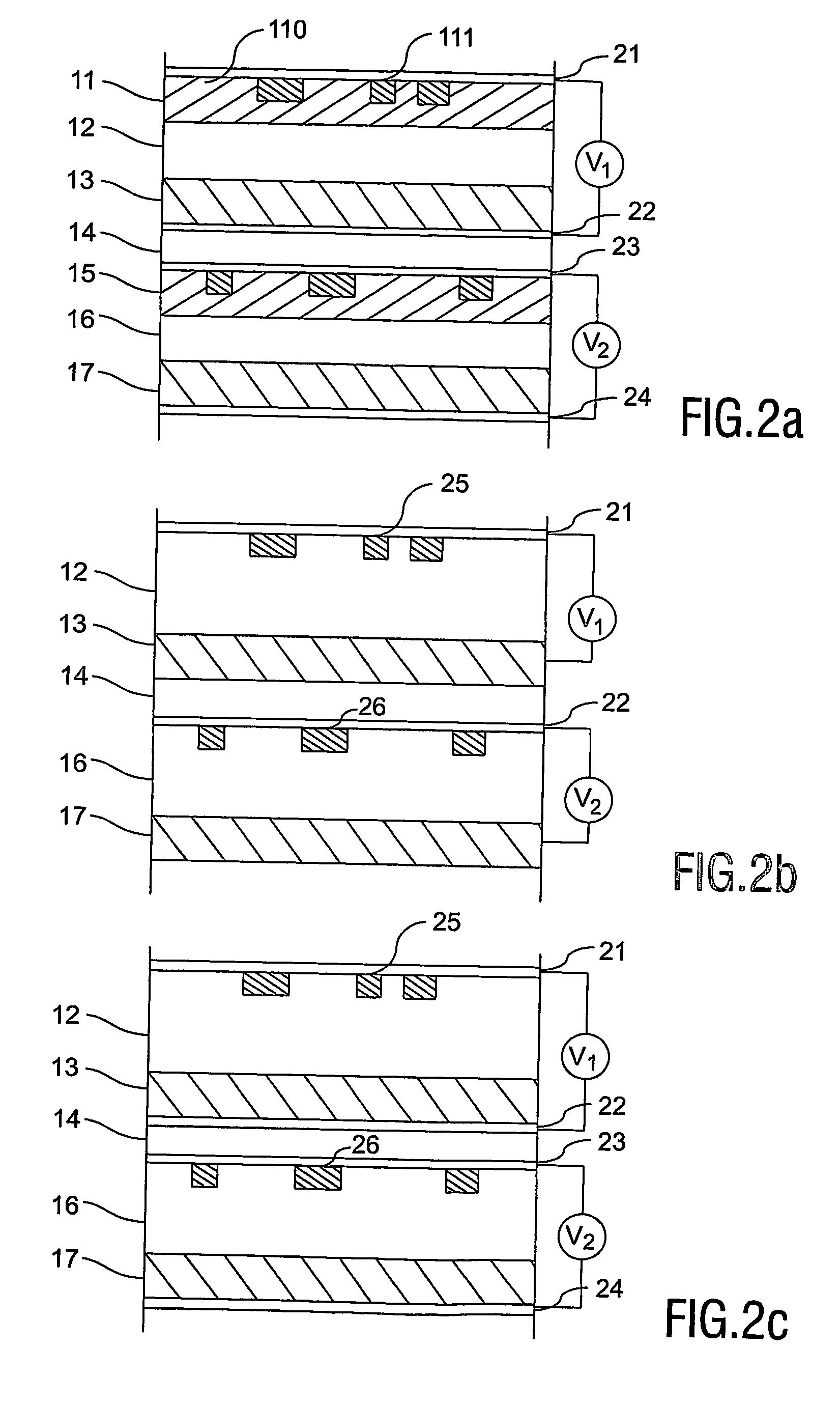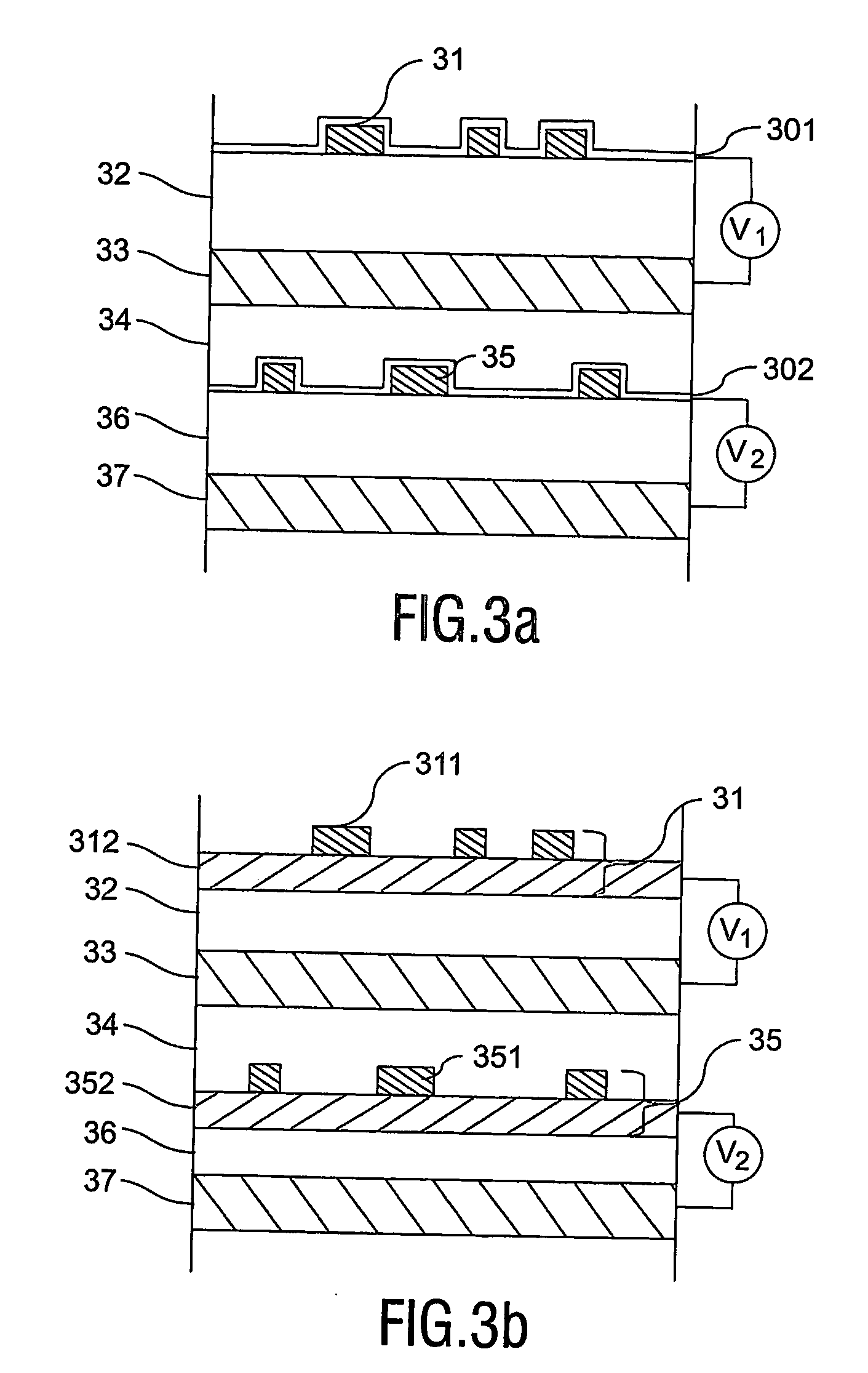Multi-stack fluorescent information carrier with electrochromic materials
a fluorescent information carrier and fluorescent technology, applied in the field of multi-stack fluorescent optical information carriers, can solve the problems of deterioration of writing and reading, limited information layer number in such information carrier, and decrease in the luminous intensity of the optical beam, so as to reduce the possible number of layers, improve the interaction, and reduce the interaction
- Summary
- Abstract
- Description
- Claims
- Application Information
AI Technical Summary
Benefits of technology
Problems solved by technology
Method used
Image
Examples
first embodiment
[0090] In a first embodiment, the first and second information layers 51 and 55 comprise an electrochromic material having an ability to take up or release electrons which ability can be locally reduced by means of the optical beam at the wavelength 11. In order to locally reduce the ability to take up or release electrons of the electrochromic materials, a relatively high power of the optical beam is required. The high power is absorbed in the material and changes its material properties, for example by melting, annealing, photochemical reactions, thermal damaging or deterioration.
[0091] This relatively high power is used during writing of information on the information carrier, whereas a smaller lower is used during reading, the latter being incapable of reducing the ability to take up or release electrons of the electrochromic materials.
[0092] In order to write information on the first information layer 51, the optical beam having the relatively high power is focused on the firs...
second embodiment
[0097] In a second embodiment, the first and second information layers 51 and 55 comprise a fluorescent material having an ability to emit light by fluorescence, which ability can be locally reduced by means of the optical beam at the wavelength 11. In order to locally reduce the ability to emit light by fluorescence, a relatively high power of the optical beam is required. This relatively high power is used during writing of information on the information carrier, whereas a lower power is used during reading, which power is incapable of reducing the ability to emit light by fluorescence of the fluorescent materials.
[0098] In order to write information on the first information layer 51, the optical beam having the relatively high power is focused on the first information layer 51, in order to locally reduce the ability to emit light by fluorescence of the fluorescent material, for writing marks. The same process applies for writing information on the second information layer 55.
[00...
PUM
| Property | Measurement | Unit |
|---|---|---|
| electrochromic | aaaaa | aaaaa |
| optical properties | aaaaa | aaaaa |
| fluorescent | aaaaa | aaaaa |
Abstract
Description
Claims
Application Information
 Login to View More
Login to View More - R&D
- Intellectual Property
- Life Sciences
- Materials
- Tech Scout
- Unparalleled Data Quality
- Higher Quality Content
- 60% Fewer Hallucinations
Browse by: Latest US Patents, China's latest patents, Technical Efficacy Thesaurus, Application Domain, Technology Topic, Popular Technical Reports.
© 2025 PatSnap. All rights reserved.Legal|Privacy policy|Modern Slavery Act Transparency Statement|Sitemap|About US| Contact US: help@patsnap.com



